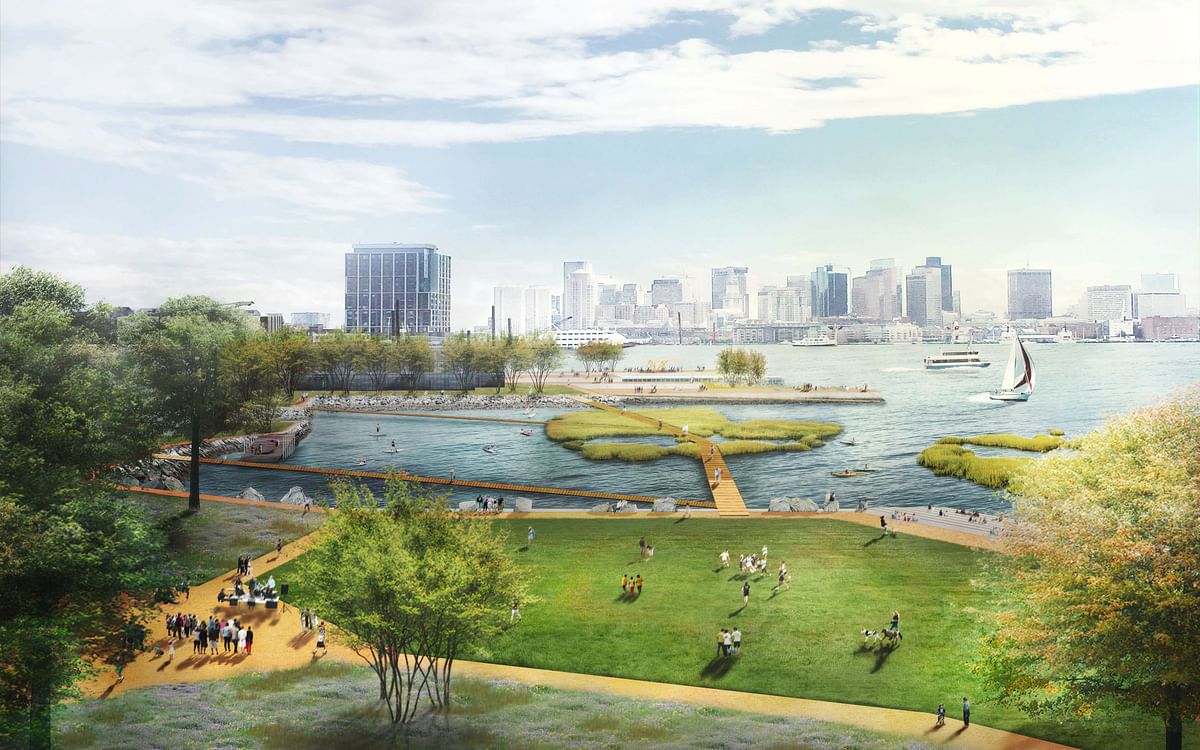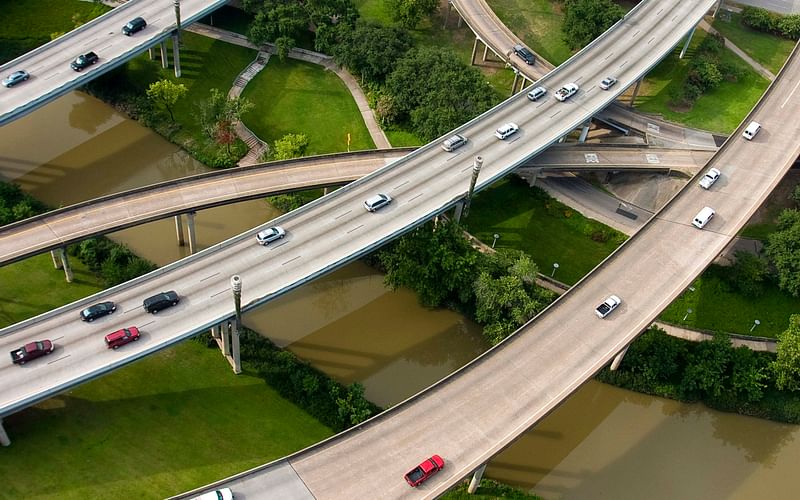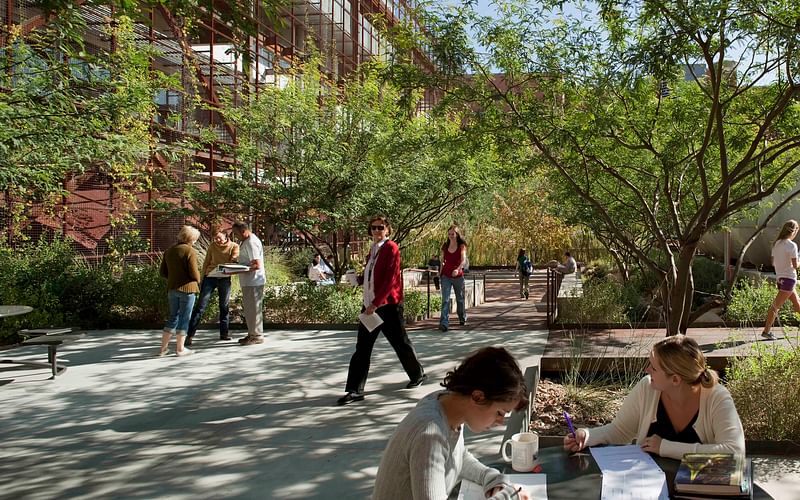The American Society of Landscape Architects discuss new strategies to help combat climate change
By Bustler Editors|
Wednesday, Jul 3, 2019

Related
Climate change has reinforced the need for architects, landscape architects, and urban planners to reassess design strategies and approaches. The built environment must be resilient to the changing environment and implement design techniques that can withstand global warming, storms, wildfires, and other environmental disasters. With a growing reassessment of what cities and buildings need, the American Society of Landscape Architects decided to initiate a Blue Ribbon Panel on Climate Change and Resilience. During the panel's discussions, strategies and plans were created to help redirect design techniques to help create better building solutions.
"Landscape architects across the country are creating a new paradigm for building that works in tandem with natural systems and considers the needs of low- and middle-income communities to build a more resilient, sustainable future."
Below are 20 case studies that showcase the panel's findings.

1. Buffalo Bayou Promenade in Houston, Texas - The Buffalo Bayou Promenade turned an inaccessible bayou underneath Houston’s spaghetti of freeways and bridges into a destination linear park with bicycle and walking trails. In addition to its flood management duties, the promenade was designed to improve connectivity—bringing pedestrians and bicyclists to and from Houston’s downtown core to the river park to the west.
2. Climate Ready East Boston in Boston, Massachusetts - A combination of short- and long-term strategies will protect some of Boston's most disadvantaged communities and hundreds of millions of dollars' worth of critical infrastructure from the worst effects of extreme storm events.
3. Firescape Demonstration Garden in Santa Barbara, California - This demonstration garden outside Santa Barbara’s Firehouse #7 is designed to educate homeowners about “firewise” landscaping. Hardy plantings are organized into four concentric zones that become taller and less water-intensive the farther away they are from the home.
4. Green City, Clean Waters in Philadelphia, Pennsylvania - In 2011, Philadelphia created this first-of-its-kind, Environmental Protection Agency-approved, comprehensive, citywide plan to use green infrastructure to absorb stormwater. As of 2018, some 579 green infrastructure projects have led to 1,187 greened acres.
5. 'Hypar-nature' Wildlife Bridge in West Vail Pass, Colorado - To create a low-cost model for improving the safety of people and wildlife and reconnect fragmented wildlife habitat, the Center for Large Landscape Conservation launched the Animal Road Crossing (ARC) International Wildlife Crossing Infrastructure Design Competition. The competition’s five-member jury unanimously selected “Hypar-nature."

6. SW 12th Avenue Green Street in Portland, Oregon - Working with the city’s transportation and parks department, this project was constructed for just $30,000. The green street project captures 8,000 square feet of impervious area runoff by allowing stormwater to enter the first of four sidewalk stormwater planters through a 12-inch curb cut.
7. Underwood Family Sonoran Landscape Laboratory in Tucson, Arizona - In 2007, the University of Arizona created a classroom building on top of a parking lot. The Laboratory collects stormwater runoff from the building in an 11,600-gallon storage tank, which feeds a high-efficiency drip irrigation system that provides water for the landscape’s native plant life.
8. Downtown Marlborough Green Infrastructure Streetscape in Kansas City, Missouri - The Environmental Protection Agency (EPA) required Kansas City, Missouri, to reduce combined sewer overflows entering the Blue and Missouri Rivers. In the Marlborough neighborhood, they designed the first green infrastructure projects under the agreement, building a healthy, green transportation corridor along the central commercial district.
9. Paseo Verde in Philadelphia, Pennsylvania - In ethnically diverse North Philadelphia, there is a lack of affordable, sustainable housing. Paseo Verde, a multifamily housing complex, offers 53 green housing units for low- and moderate-income residents, right next to the elevated Temple University station on Philadelphia’s regional rail system.

10. Solar Strand in Buffalo, New York - A quarter-mile-long array of photovoltaic panels winds through the campus of the University at Buffalo, generating 750 kilowatts of renewable energy, enough to power 700 on-campus apartments. Solar Strand saves $100,000 in electricity costs and means 400 fewer tons of greenhouse gas emissions enter the atmosphere each year.
11. The Steel Yard in Providence, Rhode Island - On a lead-contaminated brownfield, a shuttered steel and iron plant is now the Steel Yard, a new space for community artists, industrial arts education, workforce training, small-scale manufacturing, and community events in one of Providence’s oldest low-income neighborhoods.
12. Fitzgerald Revitalization Plan in Detroit, Michigan - Currently in progress, this plan improves community health through restorative green spaces, increases the affordable housing stock, and safely connects residents to nearby colleges—undoing decades of environmental injustice and creating new opportunities.
13. Gentilly Community Adaptation Program in New Orleans, Louisiana - With $141 million in funds from the U.S. Department of Housing and Urban Development’s National Disaster Resilience Competition, the City of New Orleans and the New Orleans Redevelopment Authority (NORA) prioritized a new community adaptation program (CAP) in Gentilly, the site of the city’s first comprehensive “resilience district.”
14. South Cypress Creek and West Junction Neighborhood Design in Shelby County, Tennessee - In an effort to improve regional resilience, HUD’s National Disaster Resilience Competition awarded $60 million to Shelby County to implement five projects at different scales. This project increases the West Junction neighborhood's capacity to prepare for and adapt to future flooding.
15. Edmonston Green Street Project in Edmonston, Maryland - With financial support from local and federal governments, Edmonston constructed one of the first green complete streets in the country. Decatur Avenue features 100 percent LED lighting, Americans with Disabilities Act (ADA)-compliant sidewalks, and is lined with bioretention gardens and tree boxes that capture and filter stormwater runoff.

16. Jackson Street Reconstruction Project in Saint Paul, Minnesota - Last reconstructed more than half a century ago, Jackson Street has been transformed by incorporating an all-ages, all-abilities bikeway, creating a truly multimodal corridor. It features a 12-foot-wide, two-way, grade-separated bikeway, partitioned from motor vehicles by low rails and green buffers, which makes transportation easier and safer for people walking, bicycling, and driving.
17. Los Angeles Riverfront Greenway Phase II in Studio City, California - Landscape architecture firm was brought in to transform a muddy, often-flooded, maintenance-only road that was closed to the public into a half-mile, multipurpose linear park that strengthens the sense of place, opens the river to the community, supports ecological processes, and connects a neighborhood disrupted by freeways.
18. West Florissant Avenue Great Streets Master Plan in St. Louis County, Missouri - On the heels of concluding a nine-month master planning effort for the corridor, St. Louis County retained a landscape architecture firm to further develop the master plan’s vision for a “Great Street” that would improve economic conditions, create a sense of place, and provide pedestrians, cyclists, and vehicles with a safer and ecologically sustainable corridor.
19. Gary Comer Youth Center Roof Garden in Chicago, Illinois - Located on Chicago’s South Side, a neighborhood with little access to safe outdoor environments or fresh produce, this design includes an 8,160-square-foot, 24-inch-deep educational garden that produces 1,000 pounds of organic fruit and vegetables each year and teaches children how to grow their own healthy food.
20. Oakencroft Farm in Central Virginia - The goal of this master plan was to create a new balance between agriculture production and ecological conservation. The plan includes space for cattle rotation; 15 acres of wetlands and a riparian corridor to improve water management; restored forests and wetlands; protected wildlife corridors; and insectaries to increase the number of pollinators.

RELATED NEWS OLIN+OMA, SLA, HASSELL, Agence Ter among shortlisted for 2019 World Landscape Architecture Awards

RELATED NEWS SOM + TLS Landscape Architecture to design first phase of Xiong'an New Area, China's “model city of the future”


Share
0 Comments
Comment as :